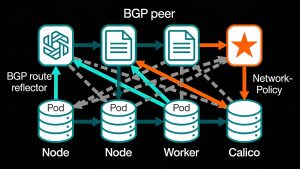In the evolving landscape of web development, both CSS custom properties and Sass variables offer powerful ways to manage design tokens and maintain consistency. However, their distinct characteristics mean they excel in different scenarios. Understanding these differences is crucial for building scalable, maintainable, and adaptable user interfaces.
Understanding the Core Differences
Sass variables and CSS custom properties may appear similar at first, but their underlying mechanics set them apart:
- Sass variables are compile-time constants. They are resolved during the build process, making them ideal for enforcing unchanging brand guidelines and performing complex calculations.
- CSS custom properties are runtime variables. They remain accessible in the browser’s DOM and can be updated dynamically, enabling live theming, user-driven customization, and integration with content management systems.
This distinction reflects the dual nature of modern web projects, which often require both strict design governance and the flexibility to adapt styles on the fly.
When to Use CSS Custom Properties
CSS custom properties shine in scenarios where adaptability and runtime control are essential:
- Dynamic Theming: Custom properties allow for seamless theme switching-such as toggling between light and dark modes-without reloading the page.
- User Interaction: When users can alter aspects of the UI, updating a custom property is a straightforward and maintainable solution.
- CMS and Backend Integration: For projects where content creators need to adjust variants or themes, custom properties can be set from the backend and reflected immediately in the browser.
- Responsive Design: Custom properties simplify media query overrides, reducing code duplication and enhancing maintainability.
- Component Overrides: Individual components can locally override global variables, enabling exceptions without disrupting the overall system.
Example Use Cases:
- Defining a global background color and allowing components like alerts to override it for specific needs.
- Creating relationships between values, such as scaling icon sizes relative to font size using runtime calculations.
When to Use Sass Variables
Sass variables are best suited for scenarios where immutability and advanced logic are required:
- Brand Consistency: Lock down key brand colors and spacing values that should never change during runtime.
- Mathematical Foundations: Use Sass’s powerful compile-time math for generating consistent spacing, typography scales, and color palettes.
- Utility Class Generation: Leverage Sass loops and functions to create utility classes or design tokens efficiently.
- Performance Optimization: Offload heavy calculations to build time, reducing runtime overhead in the browser.
- Legacy Support: Ensure compatibility with older browsers that may not fully support CSS custom properties.
Example Use Cases:
- Defining a spacing scale with Sass variables and using them throughout the stylesheet for consistency.
- Generating color themes and layout grids that remain fixed after compilation.
Hybrid Approach: Leveraging Both Tools
Rather than choosing one over the other, many modern workflows combine Sass variables and CSS custom properties for maximum flexibility:
| Layer | Purpose | Example |
|---|---|---|
| Sass Layer | Compile-time constants | $gap: 1.125rem; |
| CSS Layer | Runtime-adjustable values | --component-spacing: #{$gap}; |
In this architecture, Sass variables serve as the source of truth for values that should remain constant, while CSS custom properties deliver those values to the browser for runtime manipulation. This layered approach supports both strict design requirements and dynamic user experiences.
Decision Matrix: Choosing the Right Tool
| Factor | CSS Custom Property | Sass Variable |
|---|---|---|
| Runtime changes | Yes | No |
| CMS exposure | Yes | No |
| Theming | Yes | Limited |
| Math operations | Basic (calc()) | Advanced |
| Browser support | IE11+ (with polyfills) | Universal |
Selecting the appropriate tool depends on the specific needs of the project, the team’s workflow, and the product’s requirements.
Conclusion
The interplay between Sass variables and CSS custom properties is not a matter of one being superior to the other, but rather about using each where it excels. Sass variables anchor the unchangeable aspects of a design system, while CSS custom properties inject necessary flexibility and adaptability at runtime. By intentionally layering these technologies, developers can create resilient, scalable, and user-friendly interfaces.
As browser capabilities evolve, the distinction between these tools may blur, but the guiding principle remains: use Sass for what must remain fixed, and CSS custom properties for what needs to adapt. The most robust architectures are built not just with tools, but with thoughtful decisions about when and how to use them.
Read more such articles from our Newsletter here.



